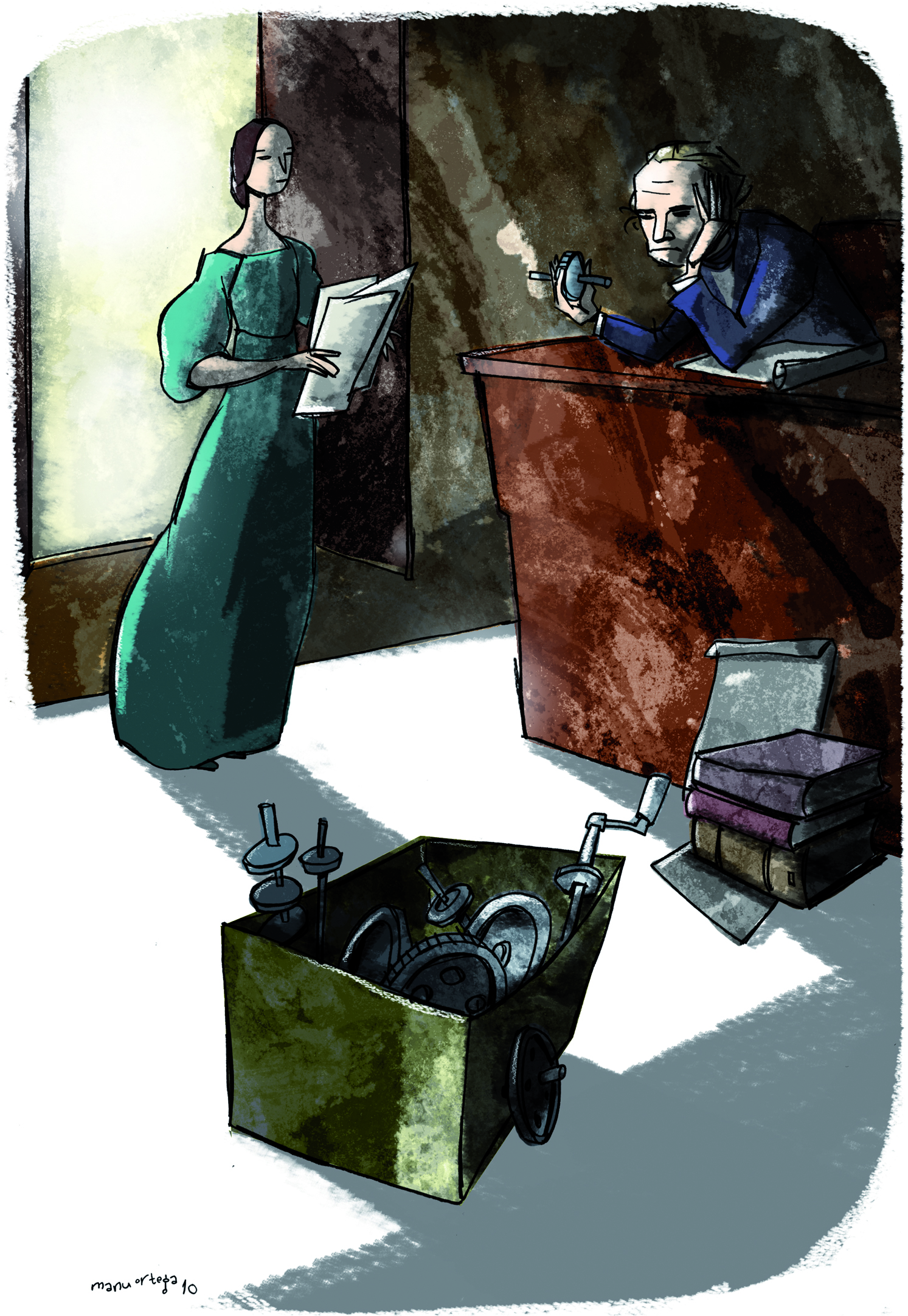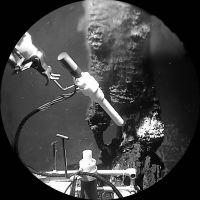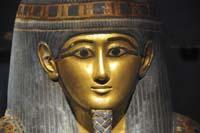Dream of mechanical computers
2010/03/01 Etxebeste Aduriz, Egoitz - Elhuyar Zientzia Iturria: Elhuyar aldizkaria

I was sitting in a room of the Analytical Society of Cambridge, with head inclined towards the table, thoughtful; and at the table with logarithm boards open. When a companion enters the room and sees it in that attitude, "Babbage, what are you dreaming of?" He asked. "I was thinking that all these tables were calculable by a machine... I ask God to make these calculations with the strength of the steam! ".
The young Charles Babbage was concerned about the number of errors of those tables. At that time, XIX. At the beginning of the twentieth century books were published full of numerical tables essential for sailors, distributors, engineers and scientists in general. Babbage himself, mathematician, had experience in this type of tables and knew how laborious and difficult the work was. And I was convinced that while the elaboration of these tables was in the hands of people, mistakes would be inevitable.
That is why he began to dream of the steam machines that were going to make those calculations. In fact, the chief of Babbags was not made to be still. Among other things, he invented various railway devices, including ophthalmoscope, practiced cryptography, discovered that the rings of fossil trees served to know the climate of the past, proposed the mail franking system we currently use, etc. Once he got into an oven of more than 100ºC for a few minutes and came to the conclusion that he would be able to go down to the crater of Vesuvo. It descended years later.
But the greatest passion came through the dream path in that room of the Analitical Society. Ten years later, in 1822, he presented at the Royal Society the design of the "differential machine". This machine would be able to calculate polynomial functions and print results using the method of finite differences. It was a machine full of metal gears embedded in several axes, with about 25,000 pieces and an approximate weight of 15 tons.
The idea was very well received and Babbage convinced the government to finance this project. But ten years later they failed to build the machine, and in 1833 the government decided to abandon the project.
Babbage did not cease. Furthermore, by then there was a better idea. In fact, he realized that a machine that calculated polynomial functions should be able to perform any other calculations. He had to redesign the machine so that its mechanisms could be used in various ways. And to do this, I had to find a way to tell the machine which of the actions I could perform was to choose, that is, a programmable machine. The first computer was in Babbage's head.
He called it "analytical machine." In 1834 he had already made his first drafts. It had an input mechanism in which numbers or instructions could be introduced, a "processor" to perform the calculations, a control unit to ensure that the calculations were made in the proper order, a fourth warehouse or memory where the figures would be waiting for their turn and, finally, an output mechanism that would give the printed result.
The machine was designed to store 1,000 50 decimal numbers in the warehouse. And to give orders or instructions Joseph Jacquard took the idea of perforated cardboard cards invented in 1801 for the looms.
At that time he met the young Ada Lovelace. And he was fascinated by his talent. This eighteen year-old girl was interested in Babbage's machines, and was able to really understand Babbage's ideas, which would also have influenced that fascination.
Ada Augusta Byron, daughter of the poet Lord Byron (Ada Lovelace has remained for being countess of Lovelace). After separating from the poet at the four months of Ada, Anne Isabella Milbank tried to get her daughter out of her father's path, and so she put her to study mathematics from childhood.
By the time he met Babbage he was a skilled mathematician. Babbage's disciple and Lovelace was his best companion. Although he was often treated as a simple helper, he admired his gifts, whom he called "charming with numbers."
They continued working together with the machine. And Lovelace wrote the first "program" for the analytical machine, which would serve to calculate Bernoulli numbers if the machine had been built. Therefore, Lovelace is considered the first programmer.
Lovelace clearly saw his capacity: "This machine can do anything we can say how to do it," he said. But after the failure of the previous machine, Bagagg had not much hope of building that miraculous machine. In 1835 he wrote to an American admirer: "You will be able to detect what influence a machine of these characteristics would have on the progress of science. I live in a country unable to appreciate it."
He had also lost the government's confidence and spent his assets with the previous machine. To get money, Lovelace and Babbage also sought to develop a method to win equestrian bets, but they were not successful either.
Lovelace died at the age of 37 from cancer. Babbage continued to tune the design of his machine throughout his life. But he went away from a society that did not believe in his ideas and government. Little by little he became a poor healthy old Martian. And in the end he became more famous than for his work, for his campaign against street musicians. The Government listed the "instruments of torture that support the daily and night use of the streets of London." In it he included "organ, violin, gaita, accordion, trumpet, drum...".
P.S. : The Museum of Science of London decided to build the latest version of the differential machine of Babbags, following the original plans. It was presented in 1991, on the occasion of the 200th anniversary of Babbage's birth, and has since been exhibited in the museum. It works perfectly.

Gai honi buruzko eduki gehiago
Elhuyarrek garatutako teknologia






